Ethanol Gas Sensitivity Sensor Based on Roughened POF Taper of Modified Polypyrrole Films
Abstract
:1. Introduction

2. Sensing Mechanism
3. Experimental Evaluation
3.1. Fabrication of POF-PPy Probes
3.2. Ethanol Sensing Measurements
4. Results and Discussion
4.1. Morphology
4.1.1. Fibers
4.1.2. PPy Films
4.2. Response Behavior of POF-PPy Sensor
4.2.1. Reactant Concentration
4.2.2. Roughened Fiber
4.2.3. Repeatability
4.2.4. Bending Radius
5. Conclusions
Author Contributions
Funding
Conflicts of Interest
References
- Zhao, Y.; Li, X.G.; Zhou, X.; Zhang, Y.N. Review on the graphene based optical fiber chemical and biological sensors. Sens. Actuator B 2016, 231, 324–340. [Google Scholar] [CrossRef]
- Lopes, R.N.; Rodrigues, D.M.; Allil, R.C.; Werneck, M.M. Plastic optical fiber immunosensor for fast detection of sulfate-reducing bacteria. Measurement 2018, 125, 377–385. [Google Scholar] [CrossRef]
- Teng, C.; Liu, H.; Deng, H.; Deng, S.; Yang, H.; Xu, R.; Chen, M.; Yuan, L.; Zheng, J. Liquid level sensor based on a V-Groove structure plastic optical fiber. Sensors 2018, 18, 3111. [Google Scholar] [CrossRef] [PubMed] [Green Version]
- Yunus, M.; Arifin, A. Design of oil viscosity sensor based on plastic optical fiber. In Journal of Physics: Conference Series; IOP Publishing: Bristol, UK, 2018; p. 012083. [Google Scholar] [CrossRef]
- Renganathan, B.; Sastikµmar, D.; Raj, S.G.; Ganesan, A. Fiber optic gas sensors with vanadiµm oxide and tungsten oxide nanoparticle coated claddings. Opt. Commun. 2014, 315, 74–78. [Google Scholar] [CrossRef]
- Allsop, T.; Arif, R.; Neal, R.; Kalli, K.; Kundrát, V.; Rozhin, A.; Culverhouse, P.; Webb, D.J. Photonic gas sensors exploiting directly the optical properties of hybrid carbon nanotube localized surface plasmon structures. Light-Sci. Appl. 2016, 5, e16036. [Google Scholar] [CrossRef] [PubMed] [Green Version]
- Yu, C.; Wu, Y.; Liu, X.; Fu, F.; Gong, Y.; Rao, Y.J.; Chen, Y. Miniature fiber-optic NH3 gas sensor based on Pt nanoparticle-incorporated graphene oxide. Sens. Actuator B 2017, 244, 107–113. [Google Scholar] [CrossRef]
- Zhang, C.; Li, Z.; Jiang, S.Z.; Li, C.H.; Xu, S.C.; Yu, J.; Li, Z.; Wang, M.H.; Liu, A.H.; Man, B.Y. U-bent fiber optic SPR sensor based on graphene/AgNPs. Sens. Actuator B 2017, 251, 127–133. [Google Scholar] [CrossRef]
- Zhang, Y.; Hou, Y.; Liu, W.; Zhang, H.; Zhang, Y.; Zhang, Z.; Guo, J.; Liu, J.; Zhang, L.; Tan, Q.L. A cost-effective relative hµmidity sensor based on side coupling induction technology. Sensors 2017, 17, 944. [Google Scholar] [CrossRef] [Green Version]
- Merchant, D.; Scully, P.; Schmitt, N. Chemical tapering of polymer optical fibre. Sens. Actuator A 1999, 76, 365–371. [Google Scholar] [CrossRef]
- Gravina, R.; Testa, G.; Bernini, R. Perfluorinated plastic optical fiber tapers for evanescent wave sensing. Sensors 2009, 9, 10423–10433. [Google Scholar] [CrossRef] [Green Version]
- Batµmalay, M.; Harun, S.W.; Irawati, N.; Ahmad, H.; Arof, H. A study of relative hµmidity fiber-optic sensors. IEEE Sens. J. 2014, 15, 1945–1950. [Google Scholar] [CrossRef]
- Luo, D.; Yue, Y.; Li, P.; Ma, J.; Ling Zhang, L.; Ibrahim, Z.; Ismail, Z. Concrete beam crack detection using tapered polymer optical fiber sensors. Measurement 2016, 88, 96–103. [Google Scholar] [CrossRef]
- Batµmalay, M.; Harith, Z.; Rafaie, H.; Ahmad, F.; Khasanah, M.; Harun, S.; Nor, R.; Ahmad, H. Tapered plastic optical fiber coated with ZnO nanostructures for the measurement of uric acid concentrations and changes in relative hµmidity. Sens. Actuator A 2014, 210, 190–196. [Google Scholar] [CrossRef]
- Teng, C.; Deng, H.; Liu, H.; Yang, H.; Yuan, L.; Zheng, J.; Deng, S. Refractive Index Sensor Based on Twisted Tapered Plastic Optical Fibers. Photonics 2019, 6, 42. [Google Scholar] [CrossRef] [Green Version]
- Guo, Z.; Chu, F.; Fan, J.; Zhang, Z.; Bian, Z.; Li, G.; Song, X. Study of macro-bending biconical tapered plastic optical fiber for relative hµmidity sensing. Sens. Rev. 2019, 39, 352–357. [Google Scholar] [CrossRef]
- Herrera, N.D.; Esteban, Ó.; Navarrete, M.C.; González-Cano, A.; Benito-Peña, E.; Orellana, G. Improved performance of SPR sensors by a chemical etching of tapered optical fibers. Opt. Lasers Eng. 2011, 49, 1065–1068. [Google Scholar] [CrossRef]
- Stranik, O.; McEvoy, H.; McDonagh, C.; MacCraith, B. Plasmonic enhancement of fluorescence for sensor applications. Sens. Actuator B 2005, 107, 148–153. [Google Scholar] [CrossRef]
- Wang, Y.; Yang, J.; Wang, L.; Du, K.; Yin, Q.; Yin, Q. Polypyrrole/graphene/polyaniline ternary nanocomposite with high thermoelectric power factor. ACS Appl. Mater. Interfaces 2017, 9, 20124–20131. [Google Scholar] [CrossRef]
- Kiani, G.; Nourizad, A.; Nosrati, R. In-situ Chemical Synthesis of Polypyrrole/Silver Nanocomposite for the Use as a Room Temperature Ammonia Gas Sensor. Fibers Polym. 2018, 19, 2188–2194. [Google Scholar] [CrossRef]
- Navale, S.; Chougule, M.; Patil, V.; Mane, A. Highly sensitive, reproducible, selective and stable CSA-polypyrrole NO2 sensor. Synth. Met. 2014, 189, 111–118. [Google Scholar] [CrossRef]
- Akbarinejad, A.; Ghoorchian, A.; Kamalabadi, M.; Alizadeh, N. Electrospun soluble conductive polypyrrole nanoparticles for fabrication of highly selective n-butylamine gas sensor. Sens. Actuator B 2016, 236, 99–108. [Google Scholar] [CrossRef] [Green Version]
- Sun, J.; Shu, X.; Tian, Y.; Tong, Z.; Bai, S.; Luo, R.; Li, D.; Liu, C.C. Facile preparation of polypyrrole-reduced graphene oxide hybrid for enhancing NH3 sensing at room temperature. Sens. Actuator B 2017, 241, 658–664. [Google Scholar] [CrossRef]
- Machida, S.; Miyata, S.; Techagµmpuch, A. Chemical synthesis of highly electrically conductive polypyrrole. Synth. Met. 1989, 31, 311–318. [Google Scholar] [CrossRef]
- Qin, H.; Kulkarni, A.; Zhang, H.; Kim, H.; Jiang, D.; Kim, T. Polypyrrole thin film fiber optic chemical sensor for detection of VOCs. Sens. Actuator B 2011, 158, 223–228. [Google Scholar] [CrossRef]
- Zhang, J.; Liu, X.; Wu, S.; Xu, H.; Cao, B. One-pot fabrication of uniform polypyrrole/Au nanocomposites and investigation for gas sensing. Sens. Actuator B 2013, 186, 695–700. [Google Scholar] [CrossRef]
- Pirsa, S.; Alizadeh, N. Design and fabrication of gas sensor based on nanostructure conductive polypyrrole for determination of volatile organic solvents. Sens. Actuator B 2010, 147, 461–466. [Google Scholar] [CrossRef]
- Leung, A.; Rijal, K.; Shankar, P.M.; Mutharasan, R. Effects of geometry on transmission and sensing potential of tapered fiber sensors. Biosens. Bioelectron. 2006, 21, 2202–2209. [Google Scholar] [CrossRef]
- De-Jun, F.; Mao-Sen, Z.; Liu, G.; Xi-Lu, L.; Dong-Fang, J. D-shaped plastic optical fiber sensor for testing refractive index. IEEE Sens. J. 2014, 14, 1673–1676. [Google Scholar] [CrossRef]
- Navale, S.; Mane, A.; Chougule, M.; Sakhare, R.; Nalage, S.; Patil, V. Highly selective and sensitive room temperature NO2 gas sensor based on polypyrrole thin films. Synth. Met. 2014, 189, 94–99. [Google Scholar] [CrossRef]
- Chakrabarti, S.; Das, B.; Banerji, P.; Banerjee, D.; Bhattacharya, R. Bipolaron saturation in polypyrrole. Phys. Rev. B 1999, 60, 7691. [Google Scholar] [CrossRef]
- Appel, G.; Böhme, O.; Mikalo, R.; Schmeißer, D. The polaron and bipolaron contributions to the electronic structure of polypyrrole films. Chem. Phys. Lett. 1999, 313, 411–415. [Google Scholar] [CrossRef]
- Nicho, M.; Trejo, M.; Garcıa-Valenzuela, A.; Saniger, J.; Palacios, J.; Hu, H. Polyaniline composite coatings interrogated by a nulling optical-transmittance bridge for sensing low concentrations of ammonia gas. Sens. Actuator B 2001, 76, 18–24. [Google Scholar] [CrossRef]
- Vadivel, S.; Balaji, G.; Rathinavel, S. High performance ethanol and acetone gas sensor based nanocrystalline MnCo2O4 using clad-modified fiber optic gas sensor. Opt. Mater. 2018, 85, 267–274. [Google Scholar] [CrossRef]
- Hromadka, J.; Tokay, B.; Correia, R.; Morgan, S.P.; Korposh, S. Highly sensitive ethanol vapour measurements using a fibre optic sensor coated with metal organic framework ZIF-8. In Proceedings of the 2017 IEEE Sensors, Glasgow, UK, 29 October–1 November 2017; pp. 1–3. [Google Scholar] [CrossRef]
- Li, D.R.; Wu, G.X.; Chen, J.H.; Yan, S.C.; Liu, Z.Y.; Xu, F.; Lu, Y.Q. Ethanol Gas Sensor Based on a Hybrid Polymethyl Methacrylate–Silica Microfiber Coupler. J. Lightwave Technol. 2018, 36, 2031–2036. [Google Scholar] [CrossRef]
- Sharifpour-Boushehri, S.; Hosseini-Golgoo, S.M.; Sheikhi, M.H. A low cost and reliable fiber optic ethanol sensor based on nano-sized SnO2. Opt. Fiber Technol. 2015, 24, 93–99. [Google Scholar] [CrossRef]
- Muthusamy, S.; Charles, J.; Renganathan, B.; Sastikµmar, D. In situ growth of Prussian blue nanocubes on polypyrrole nanoparticles: Facile synthesis, characterization and their application as fiber optic gas sensor. J. Mater. Sci. 2018, 53, 15401–15417. [Google Scholar] [CrossRef]
- Puspita, I.; Husada, F.I.; Hatta, A. Detection of lard adulteration in olive oil by using tapered Plastic Optical Fiber (POF) spectroscopy. In Third International Seminar on Photonics, Optics, and Its Applications (ISPhOA 2018); International Society for Optics and Photonics, SPIE: Bellingham, WA, USA, 2019; p. 110440H. [Google Scholar] [CrossRef]
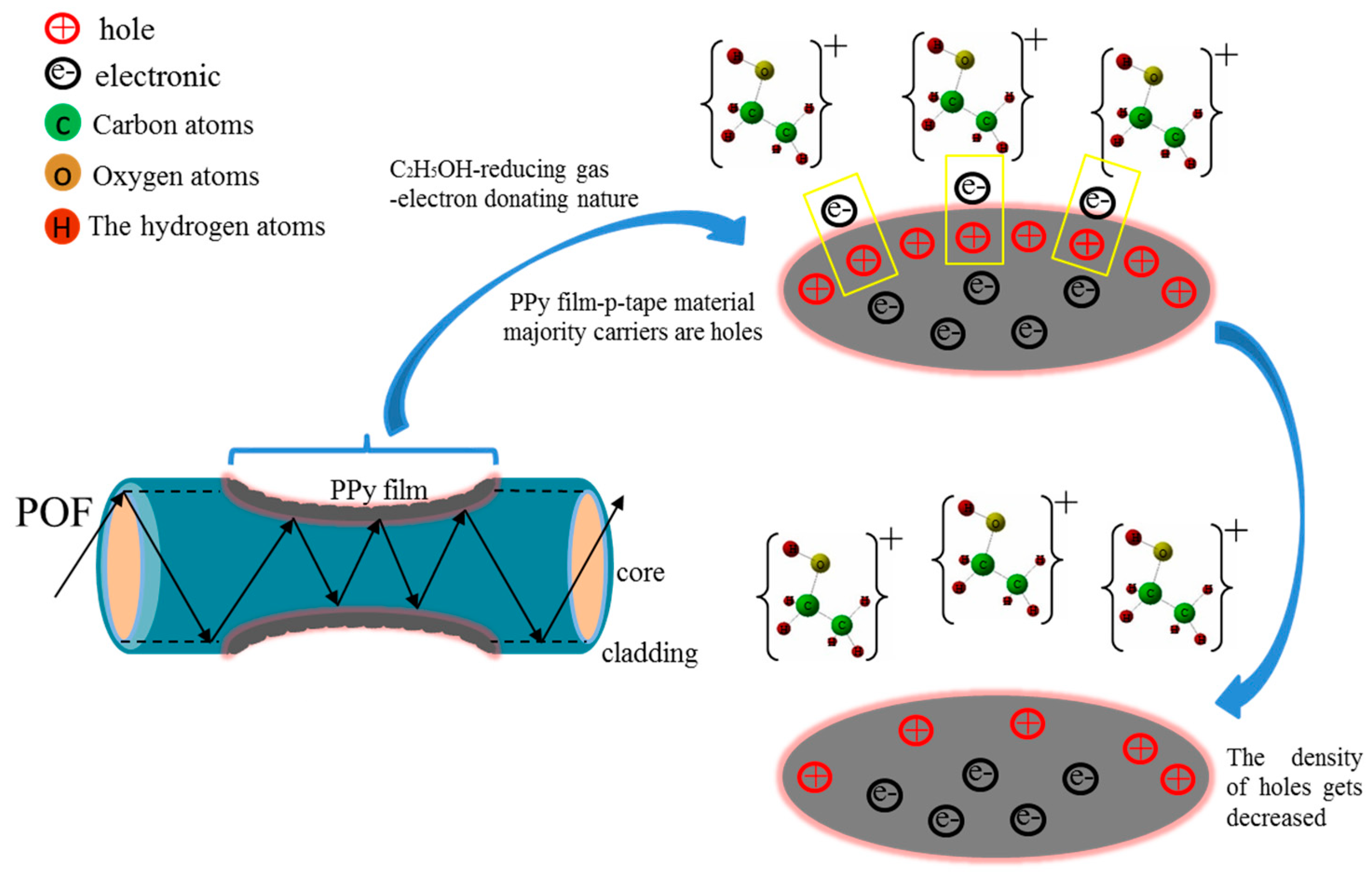
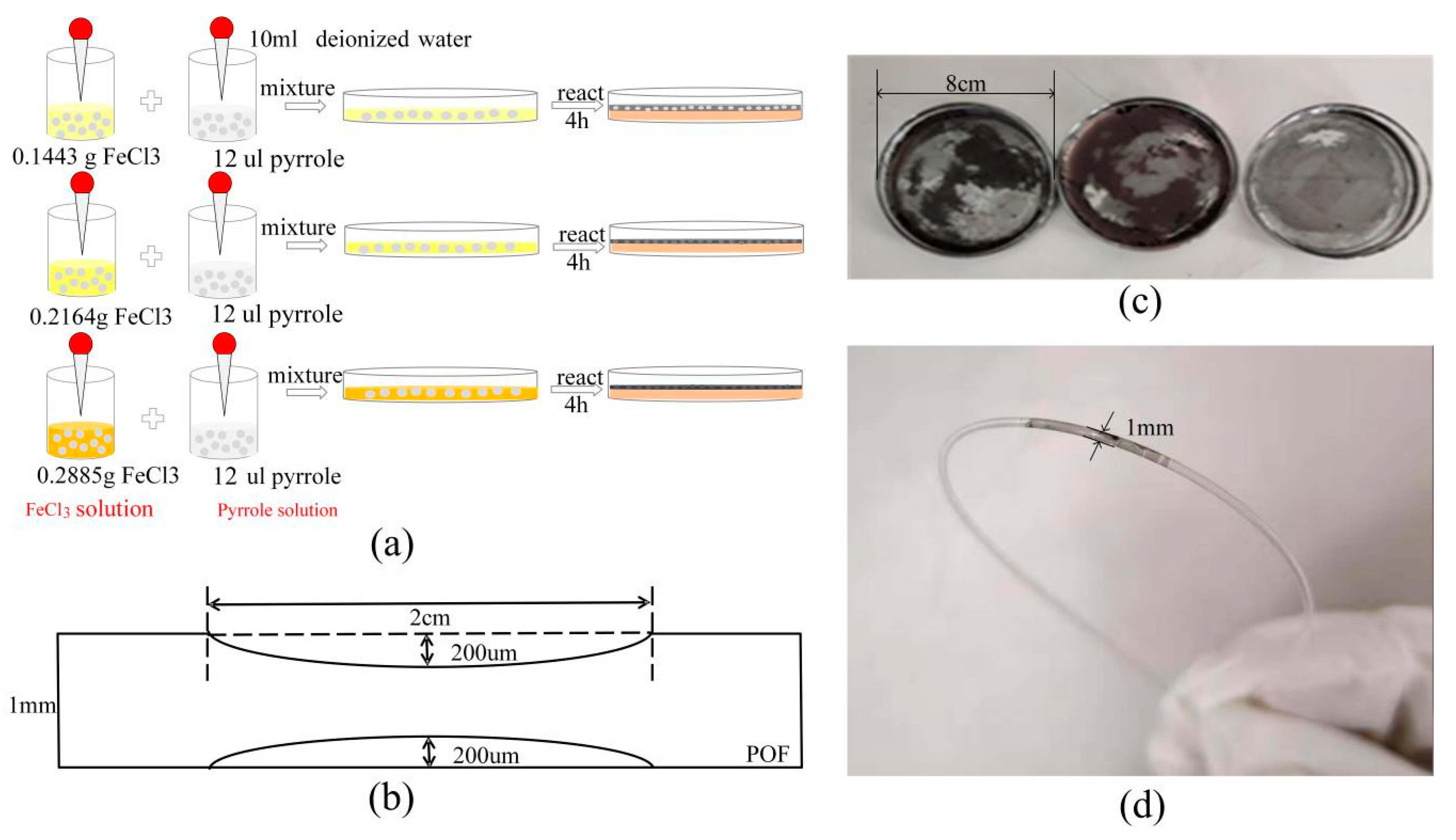
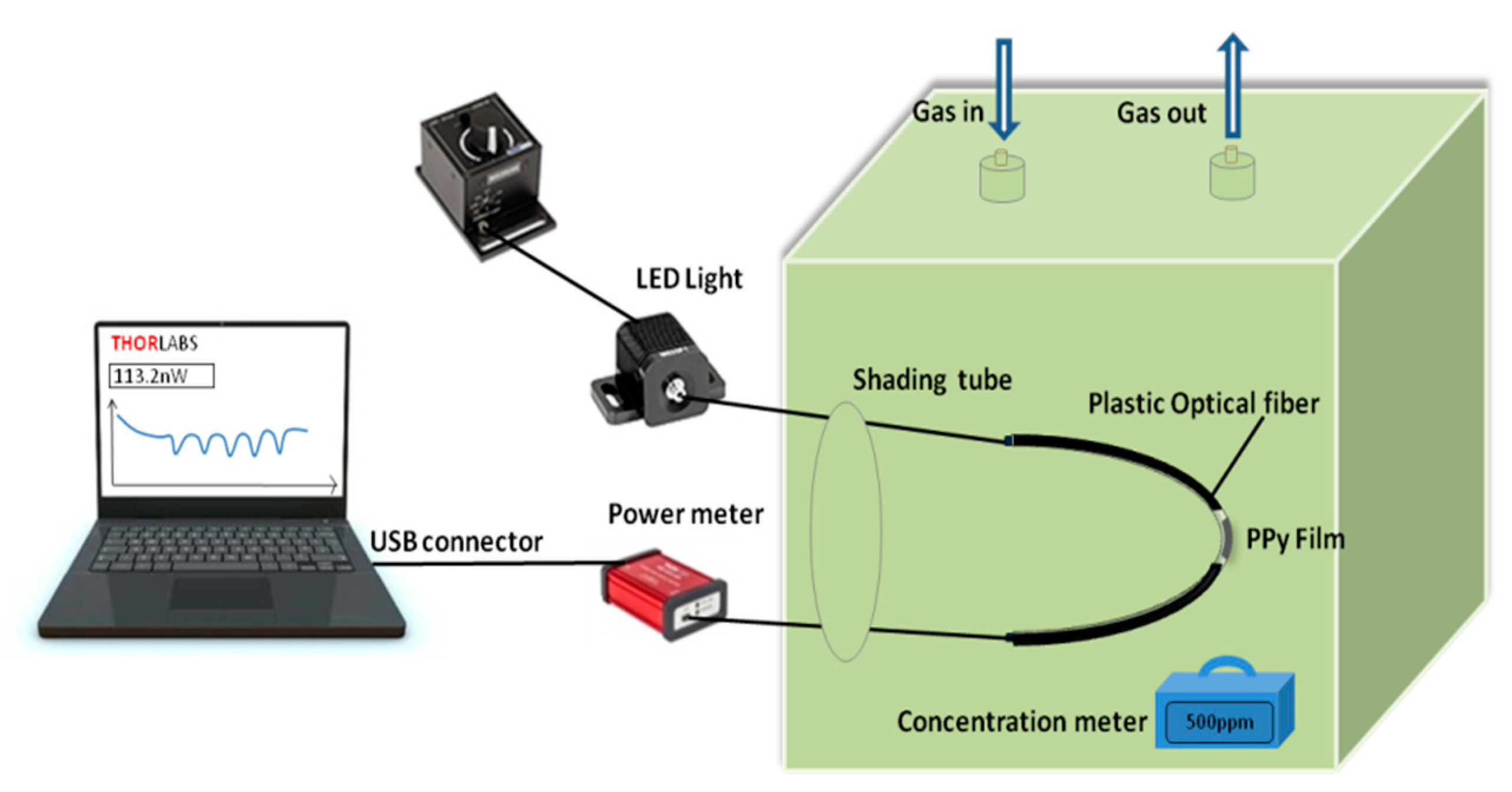
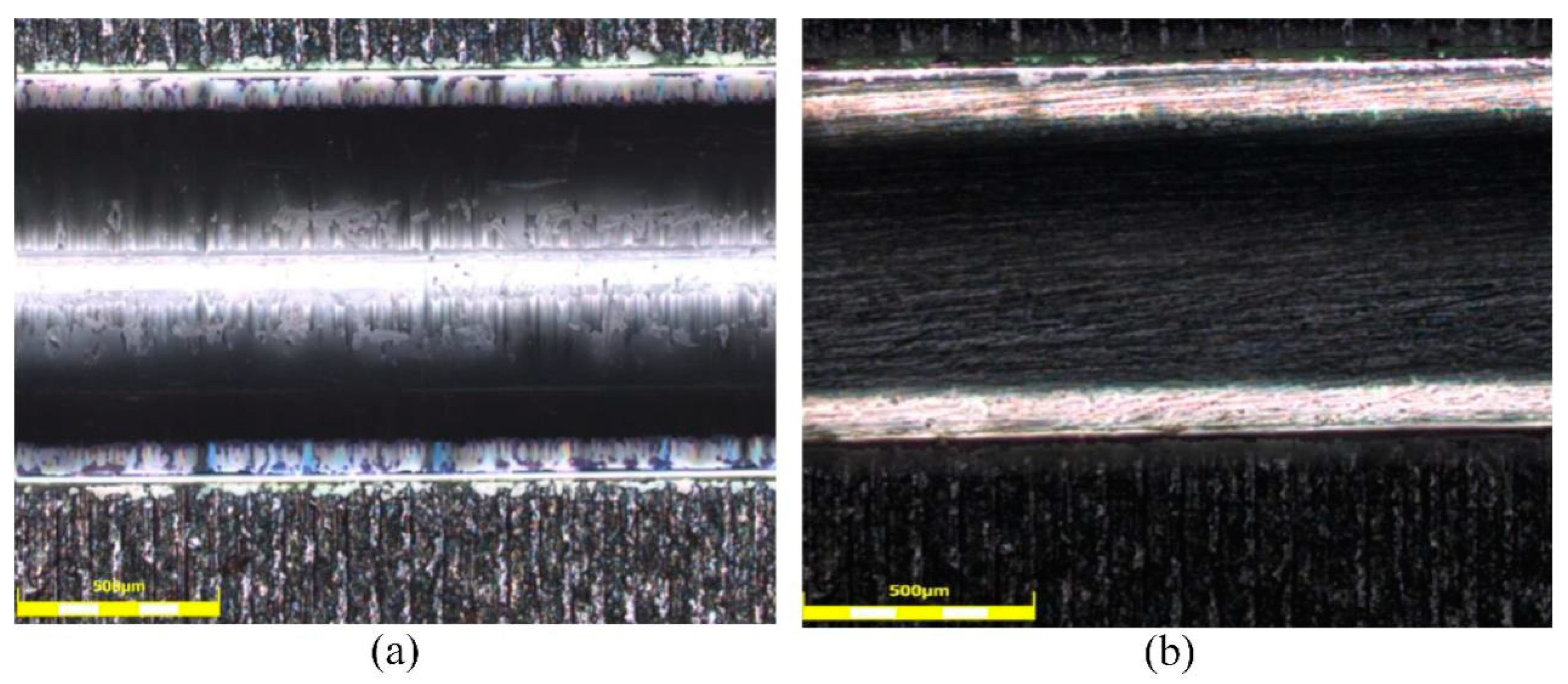
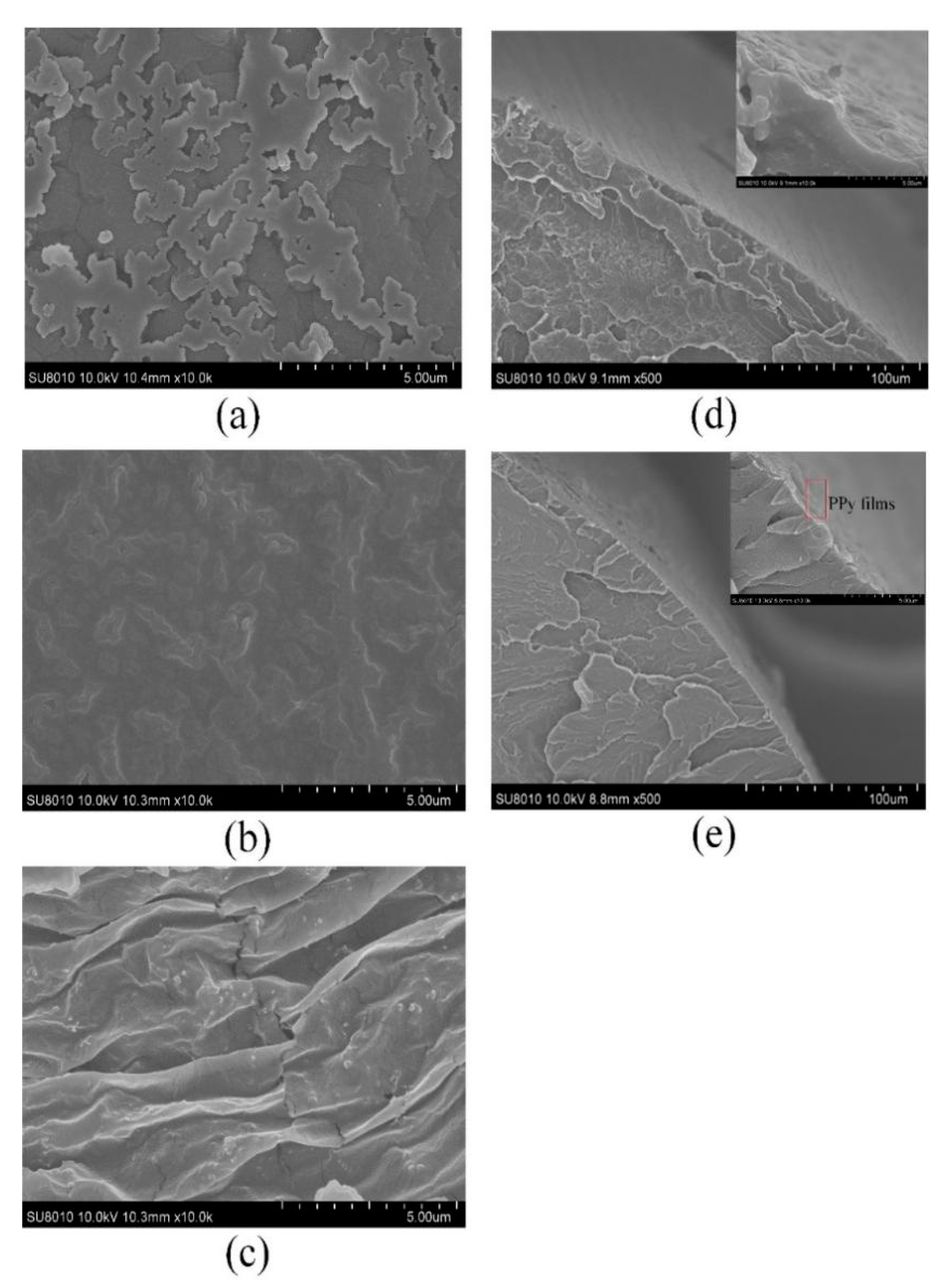
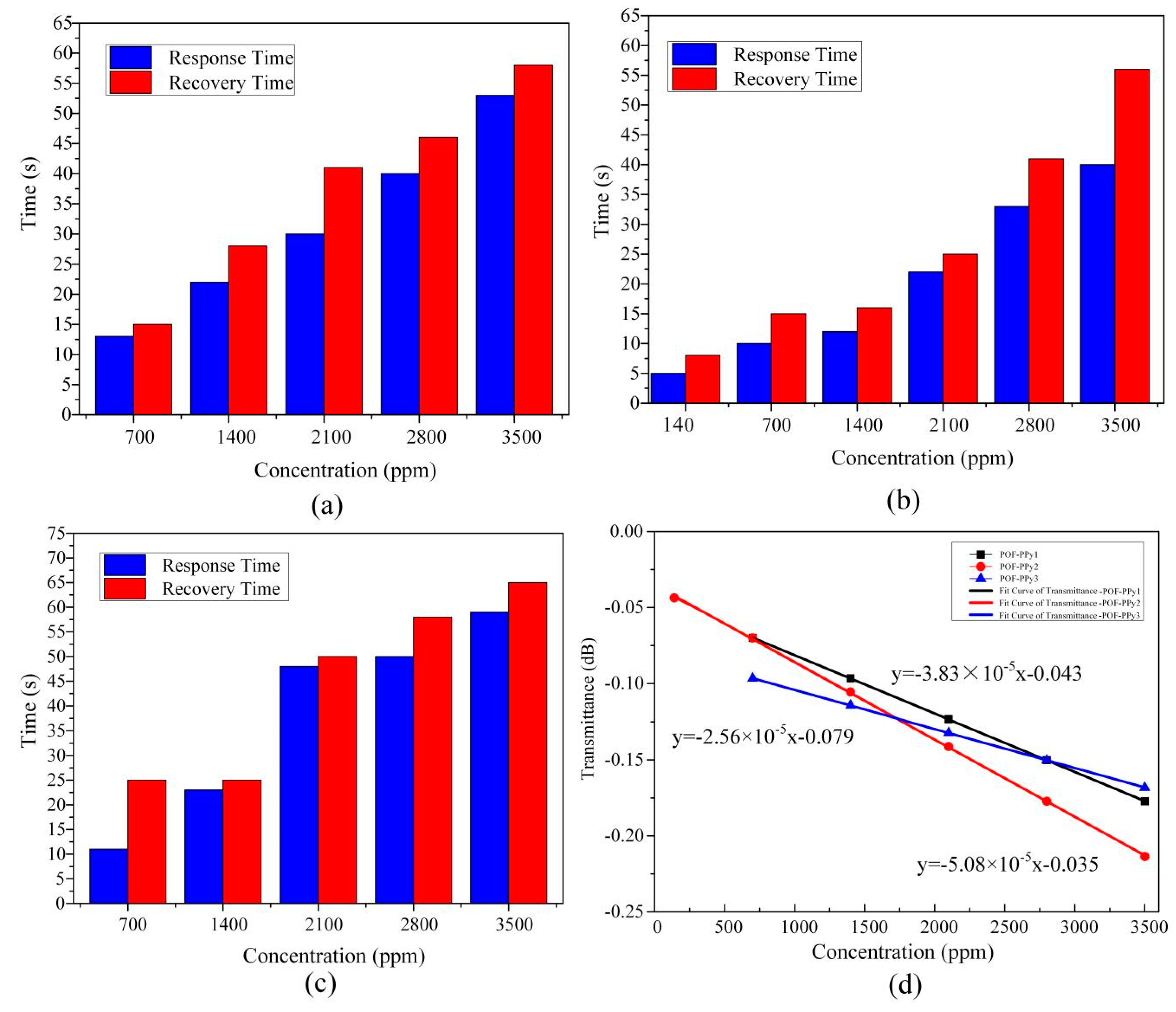
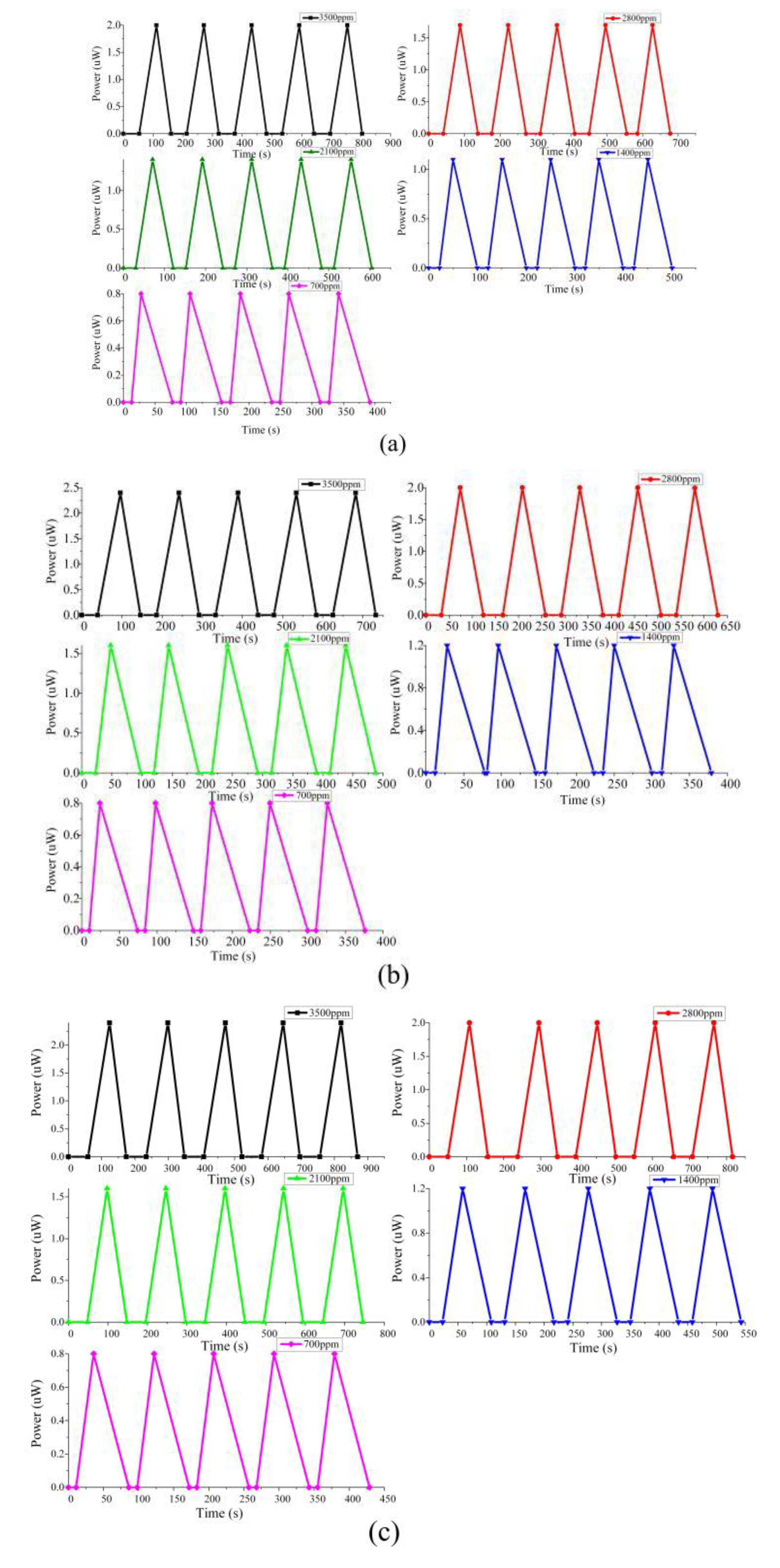
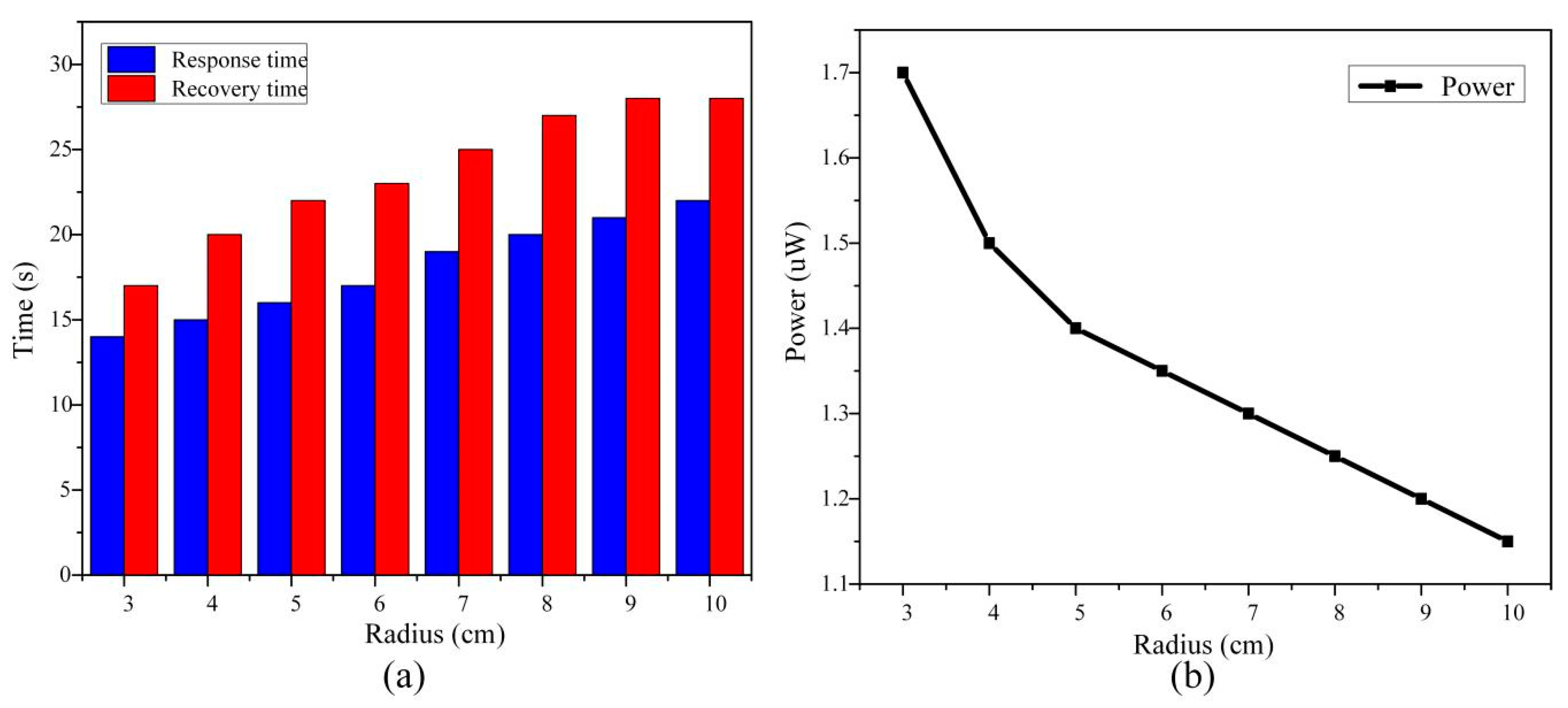
| Reference | Fiber Structure | Coating Material | Ethanol Gas Detection Range (ppm) | Response and Recovery Times (s) |
|---|---|---|---|---|
| [34] | clad–modified fiber | nanocrystalline MnCo2O4 | 0–500 | 60, 40 (500 ppm) |
| [35] | long period grating fiber | ZIF-8 | 62–666 | none |
| [36] | Silica microfiber | PMMA microwire | 0–15,000 | 250, 9.4 |
| [37] | single-mode silica fiber | nano-sized SnO2 | 1000–20,000 | 10, 55 (1000 ppm) |
| [38] | multimode PMMA fiber | polypyrrole/Prussian blue | 0–500 | none |
| This paper | POF-PPy2 | PPy films | 140–3500 | 5, 8 (140 ppm) |
| Probe | Response Time (s) | Recovery Time (s) | Transmittance (dB) |
|---|---|---|---|
| POF-PPy1 | 22 | 28 | −0.0966 |
| POF-PPy2 | 12 | 16 | −0.1055 |
| POF-PPy3 | 23 | 25 | −0.1144 |
| Cladding POF | 55 | 61 | −0.0261 |
© 2020 by the authors. Licensee MDPI, Basel, Switzerland. This article is an open access article distributed under the terms and conditions of the Creative Commons Attribution (CC BY) license (http://creativecommons.org/licenses/by/4.0/).
Share and Cite
Liu, W.; Hu, Y.; Hou, Y. Ethanol Gas Sensitivity Sensor Based on Roughened POF Taper of Modified Polypyrrole Films. Sensors 2020, 20, 989. https://doi.org/10.3390/s20040989
Liu W, Hu Y, Hou Y. Ethanol Gas Sensitivity Sensor Based on Roughened POF Taper of Modified Polypyrrole Films. Sensors. 2020; 20(4):989. https://doi.org/10.3390/s20040989
Chicago/Turabian StyleLiu, Wenyi, Yanjun Hu, and Yulong Hou. 2020. "Ethanol Gas Sensitivity Sensor Based on Roughened POF Taper of Modified Polypyrrole Films" Sensors 20, no. 4: 989. https://doi.org/10.3390/s20040989
APA StyleLiu, W., Hu, Y., & Hou, Y. (2020). Ethanol Gas Sensitivity Sensor Based on Roughened POF Taper of Modified Polypyrrole Films. Sensors, 20(4), 989. https://doi.org/10.3390/s20040989





